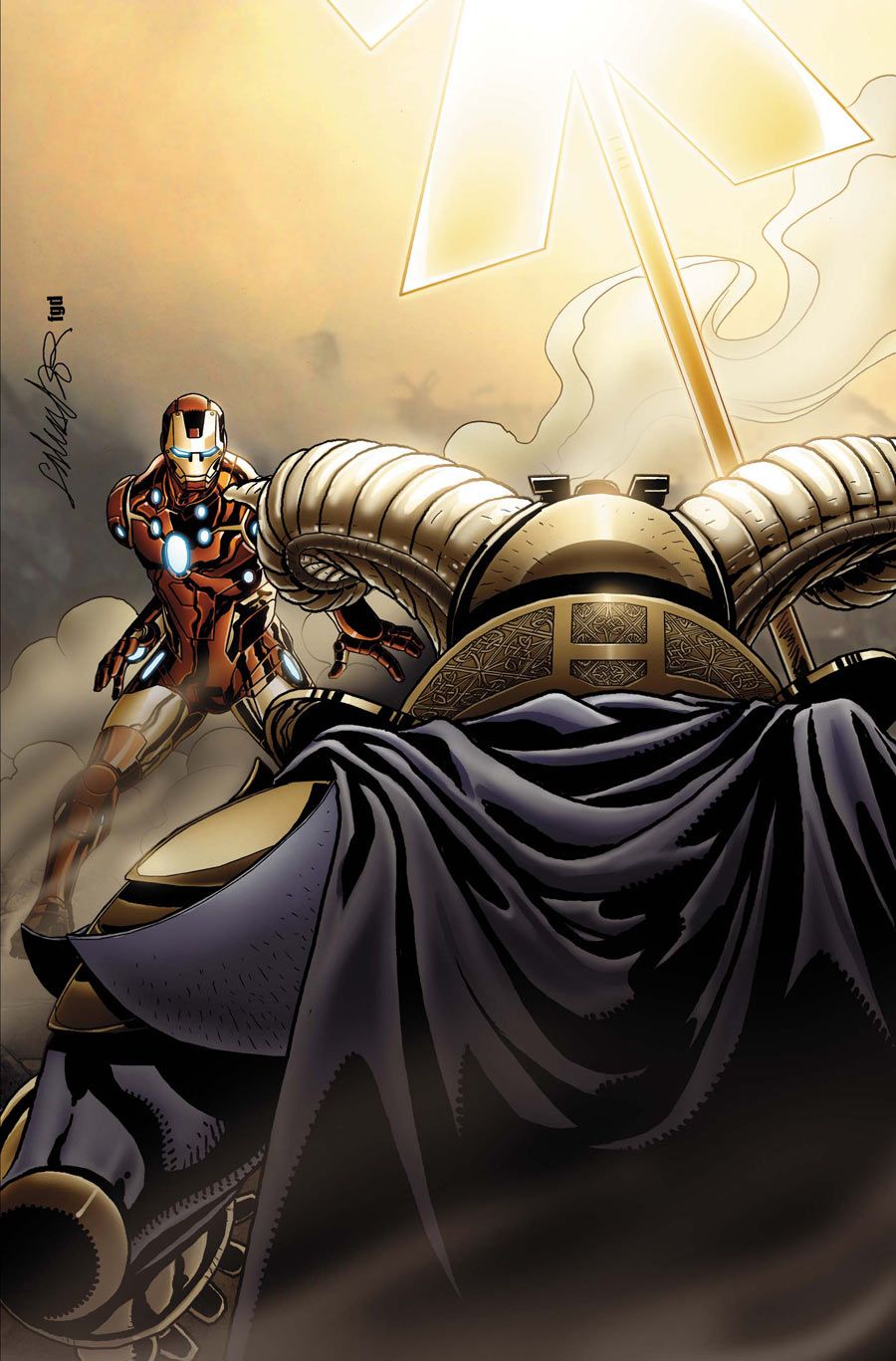Heading into "Fear Itself," Marvel released a line of teaser images with the tagline "Do you fear..." followed by an image and a conclusion to that question suited to that specific character. Now that the event is over and Marvel has released the final 'epilogue' issue with "Fear Itself" #7.3, one has to wonder how long it will be before someone online spoofs those teases with the Marvel logo and the line "Do you fear change?" Each of these post-issue seven 'epilogues' has worked to undo some big change that occurred during "Fear Itself;" first, Bucky Barnes never died, then Thor is alive somewhere while a replacement takes his place, and, now, Paris is no longer a city of stone.
Of course, the undoing of these events (even if they were always meant to be undone) comes off as a slap in the face to some degree. Nothing is permanent in superhero comics, but to undo some of the big moments in an event in its coda? That's somewhat unheard of. And Matt Fraction seems aware of that in this issue. Tony Stark visits the imprisoned Grey Gargoyle, who decimated Paris while one of the Worthy, and debates what his responsibility is in a situation like this. Should the villain face trial, spend the rest of his life imprisoned, or should he be killed? Does the role of the Serpent's hammer act as a mitigating factor? And, by the end of the issue, does Odin's undoing of what was done change anything?
That final question is an interesting one and is barely addressed, yet seems central to these 7.(*) issues. If the deaths witnessed in "Fear Itself" have been reversed or revealed to not actually have happened, does that change anything? In implying that question, it almost seems like Fraction and Marvel are trying to suggest a means for having their cake and eating it, too. To have the shock value of the deaths, of the 'big moments' without the effects. That Odin comes down reverses the effects on Paris is a very literal deus ex machina to create something approximating a happy ending and it doesn't feel earned.
Tony's conversation with Odin is never convincing, merely a means to an end. Odin comes to see Tony because Odin needs to undo what happened in Paris. Their conversation is one of convenience for the sake of the story and where Fraction needs to go. It is literally a man angrily yelling at god and god showing up to make right. Balanced with Tony's one-sided conversation with the Grey Gargoyle, it's uninspired. Tony's talk with the Grey Gargoyle is nuanced and seems more like a struggle; it's him talking without knowing exactly where things are going, trying to simply figure out what to do. Tony and Odin's scenes are easy and simple, while there's a lot beneath the surface of Tony speaking to the Gargoyle and rewards rereading.
The choice of the "Invincible Iron Man" art team of Salvador Larroca and Frank D'Armata is an appropriate one since this issue functions not so much as a coda to "Fear Itself" the mini-series but to the "Fear Itself" tie-in issues of "Invincible Iron Man." If this had simply been the next issue of that series, it wouldn't have stood out. Keeping the consistent look benefits this issue.
Some people will hate what this issue does in reverting one of the 'big moments' in "Fear Itself," but that doesn't change that half of it features strong writing that tries to address those complaints, even if it's by raising the question of what undoing those deaths means. That said, the writing is brazenly convenient in how it presents the changes. Fraction has a tendency to write stories and characters where things happen, it seems, only because he's decided that they will, with no basis in established personalities, cause and effect, or simple logic. That's what half of this comic is: events happening because it's been decided they happen; simply asking if that really changes things isn't enough.

